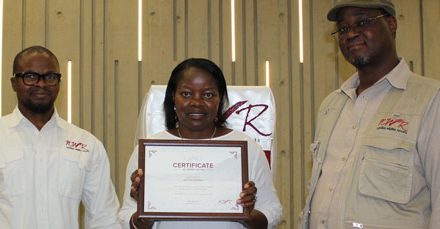
Book debut at Toursim Expo
Currently some 200 horses live in the Sperrgebiet just west of Aus. They are still in a good condition but grazing is sparse. The origin of these feral horses is clouded in controversy with several competing theories trying to explain their existence.The Gondwana Collection under the guidance of its MD, former history teacher, Mannfred Goldbeck, will release two new books on Namibian natural history at the Tourism Expo early in June.
Wild Horses of the Namib Desert
This book covers the work of the Namibia Wild Horses Foundation whose work helps to protect and promote the herd of wild horses in the Sperrgebiet National Park.
Each year thousands of tourists visit the country’s south west desert to witness the remarkable view of the wild horses which contribute to the region’s economy through tourism.
The foundation was established in 2012 to raise and strengthen awareness of the horses, with the driving forces behind this initiative being Dr Telané Greyling, a biologist and the Gondwana Collection, being managed by Mannfred Goldbeck and its partners at Klein-Aus Vista.
The foundation’s priority is to limit human intervention in the area and to preserve the horses’ life in freedom in the long term. As a means to provide horse lovers with a better insight on the history, background and behaviour of the wild horses, Dr Greyling, together with Goldbeck and Ron Swilling, have published a book titled: Wild Horses of the Namib Desert, which will be available at the Namibia Tourism Expo from 4 to 7 June in the Gondwana Hall (former Karakul hall).
Inke Stold the Public Relations Officer for Gondwana Collection said the horses have adapted their behaviour to the meagre conditions and have developed social structures of their own.
“Man only provides water for them but does not interfere otherwise. There have always been periods of droughts and weaker animals did not survive. It is the principle of natural selection which helps to maintain a strong gene pool,”said Stold.
Stold said that human intervention should be limited to situations when the entire population is at risk. “If, for example, the number of animals is dropping to such an extent that the gene pool becomes too small or if, after years of good rains, their numbers rise to a level which exceeds the capacity of their grazing area and would result in widespread deaths at the onset of drought.”
Gondwana History V
This book, the fifth in a series of history publications by Gondwana, looks at anecdotal historical events.
“Did you know that back in 1910 a shipping route was opened from Lüderitzbucht to New York? That the small piles of rock found next to roads in southern Namibia honour Haiseb, a Nama deity? And that superstition is part of everyday life in Namibia?”
“The almost forgotten Ohambo tradition in the north, the characteristics of Boeremusiek, and with Marthin Ashikoto, King of the Ndonga, whose fate was doomed by the discrepancies between traditional and European jurisdiction.”
“Namibia and southern Africa are full of intriguing stories, ranging from that of a crocodile sinking its teeth into the backside of a navy diver or the history of the world-famous song “The lion sleeps tonight”. The stories in Gondwana History V will have you feeling the heartbeat of Africa.”











































